This is the seventh in a series of posts on the Sony a9. The series starts here.
In the last post, we looked at the pixel response non-uniformity (PRNU) of the Sony a9, and found that there were some periodic components, which are usually more visually disturbing than random ones. Now I’m going to show you the results of a similar analysis of the dark-field, or read, noise. We’re going to ignore the part that changes from exposure to exposure, and concentrate on the part that is invariant, which is called fixed pattern noise (FPN). I averaged 32 exposures of the back of the body cap at 1/1000 second at ISO 100 and ISO 640, using the a9’s electronic shutter. Then I performed spectral analyses to look for periodicities.
Here is a full frame dark field image of the red raw channel of a ISO 100 exposure that has been histogram equalized to show the noise patterning.
You can see a broad vertical band on lighter pixels on the right side. That will show up as a low-frequency component on the spectral analysis. If we enlarge a section to 200%, it looks like this:
The most prominent banding is horizontal.
Now we’ll look at the spectrum of that image:
Horizontal structure have vertical frequency components and vice versa. So that horizontal banding we saw shows up as the narrow spikes in the red line. There are periodicities in the other direction, too, but they aren’t as concentrated at particular frequencies, and therefore harder to see.
Here are frequency plots of two more channels at ISO 100:
In the blue channel, the vertical frequency plot is more complicated and the noise is greater in both directions (note the y-ais scale change — the scaling of the top of that axis is chosen programmatically to keep the dc component barely within range, although it’s not readily observable on the plot).
Here are similar plots for ISO 640:
The camera seems to behave pretty much the same way in its high-conversion gain setting, except that the patterning is diminished in strength.
I want to emphasize that the absolute noise level is low in the a9, but the periodic nature of the read noise and the PRNU will cause visible noise to be more objectionable that it would be if it were random.
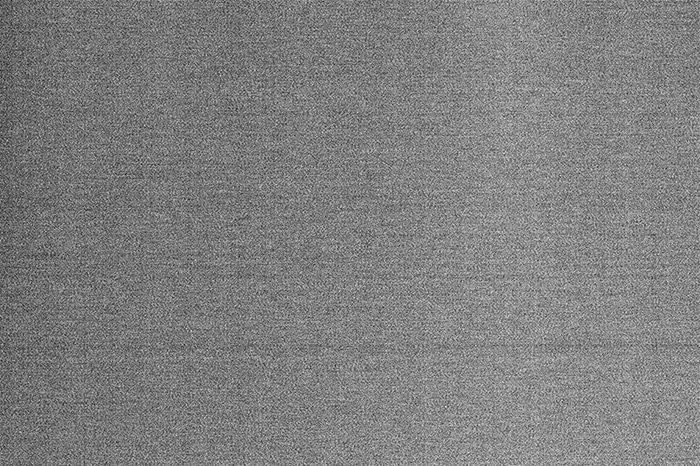
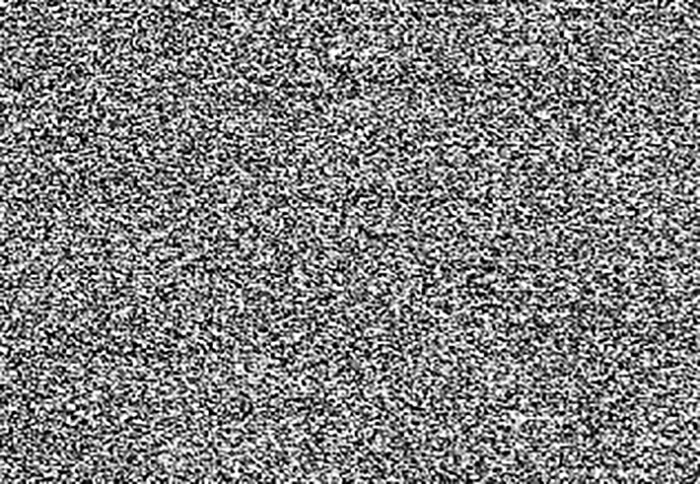
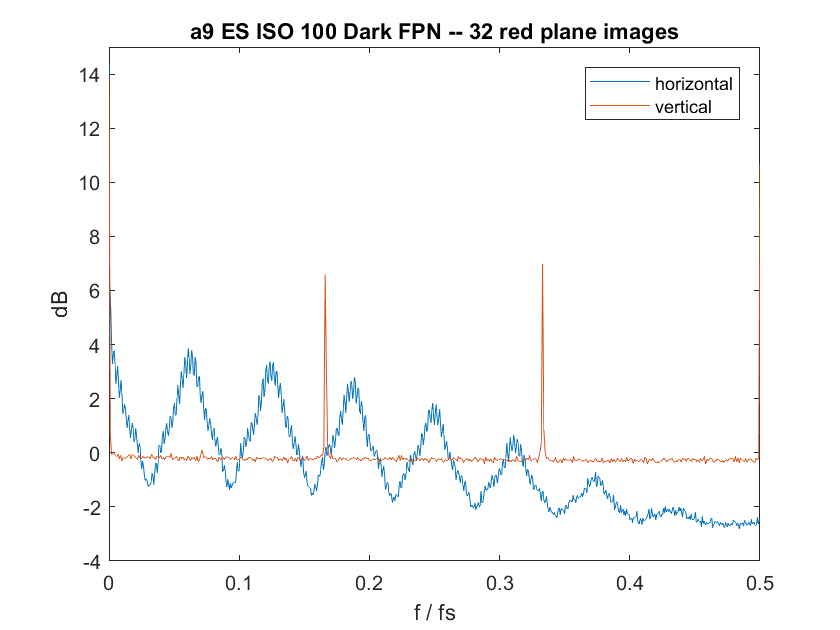
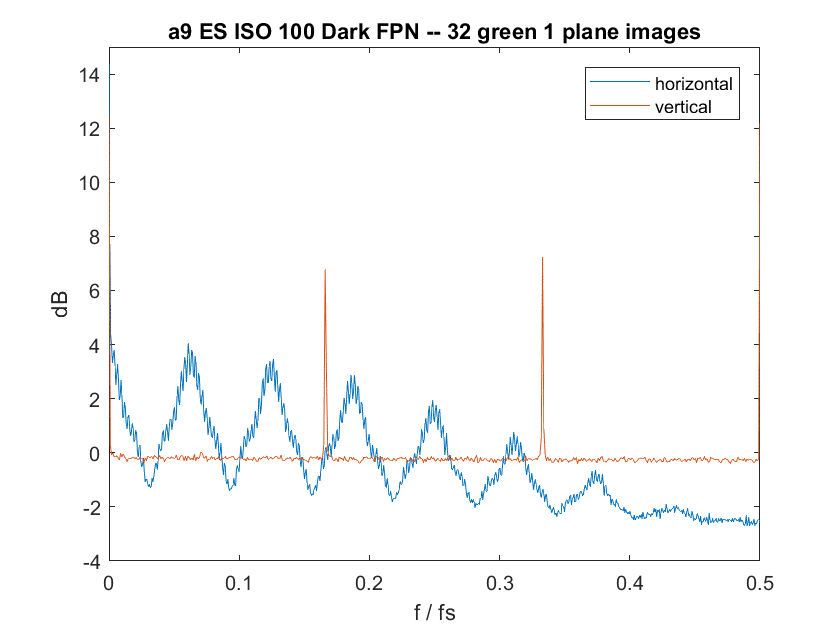
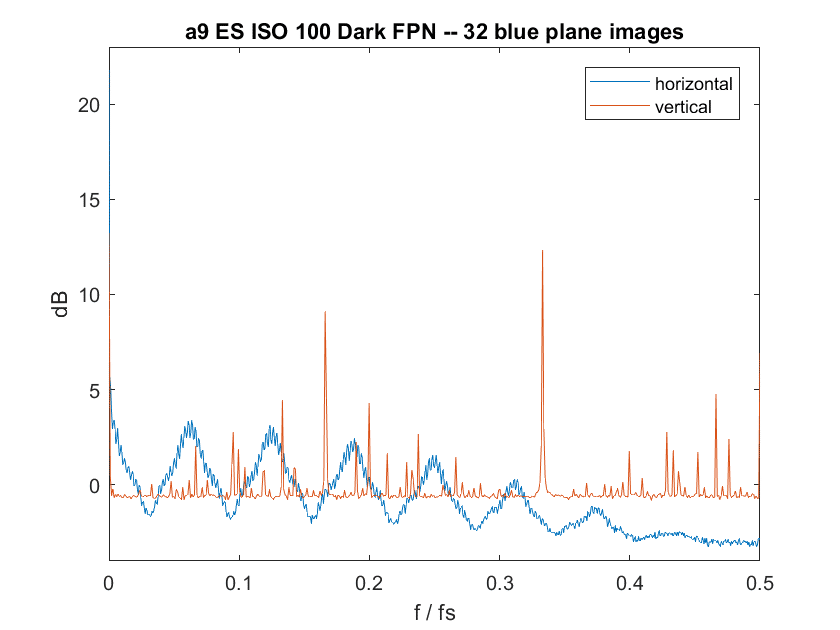
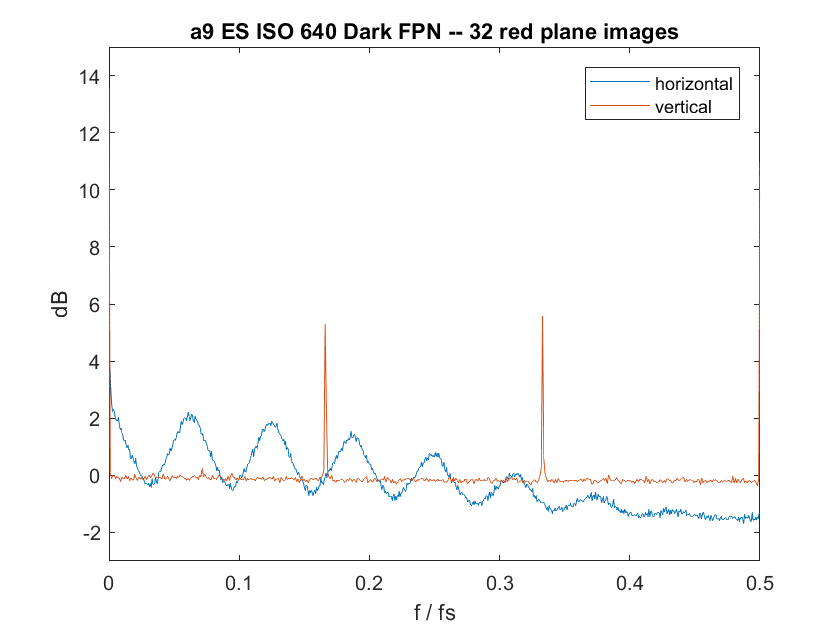
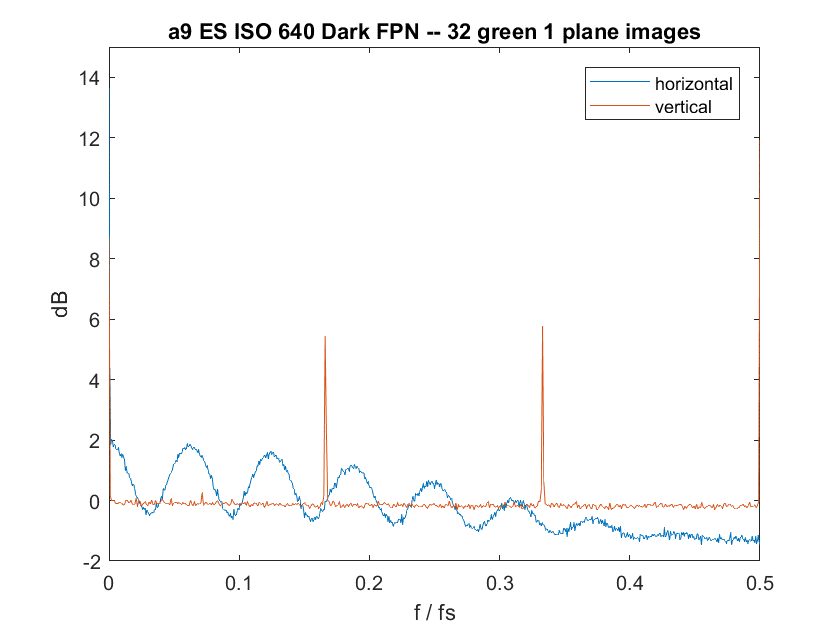
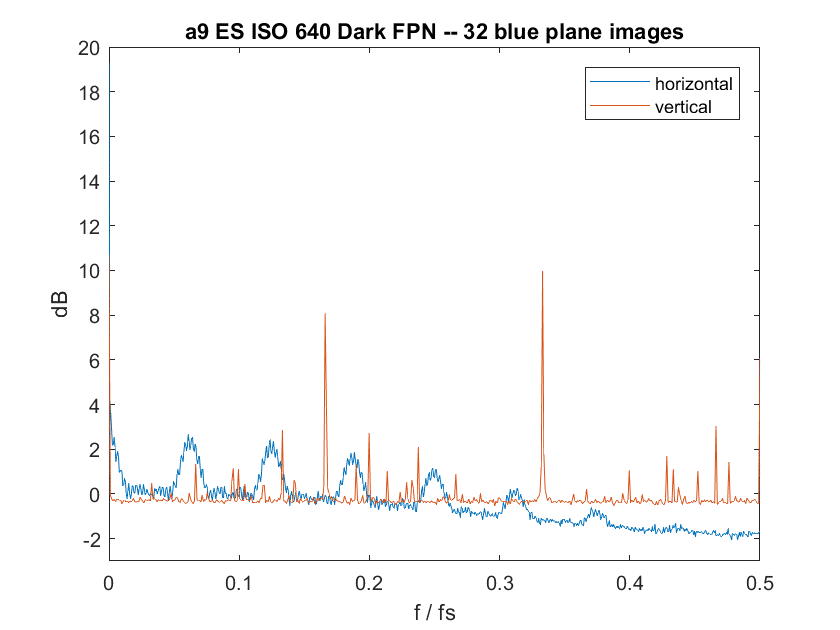
[…] Jim Kasson analyzed the Noise Behaviour: […]